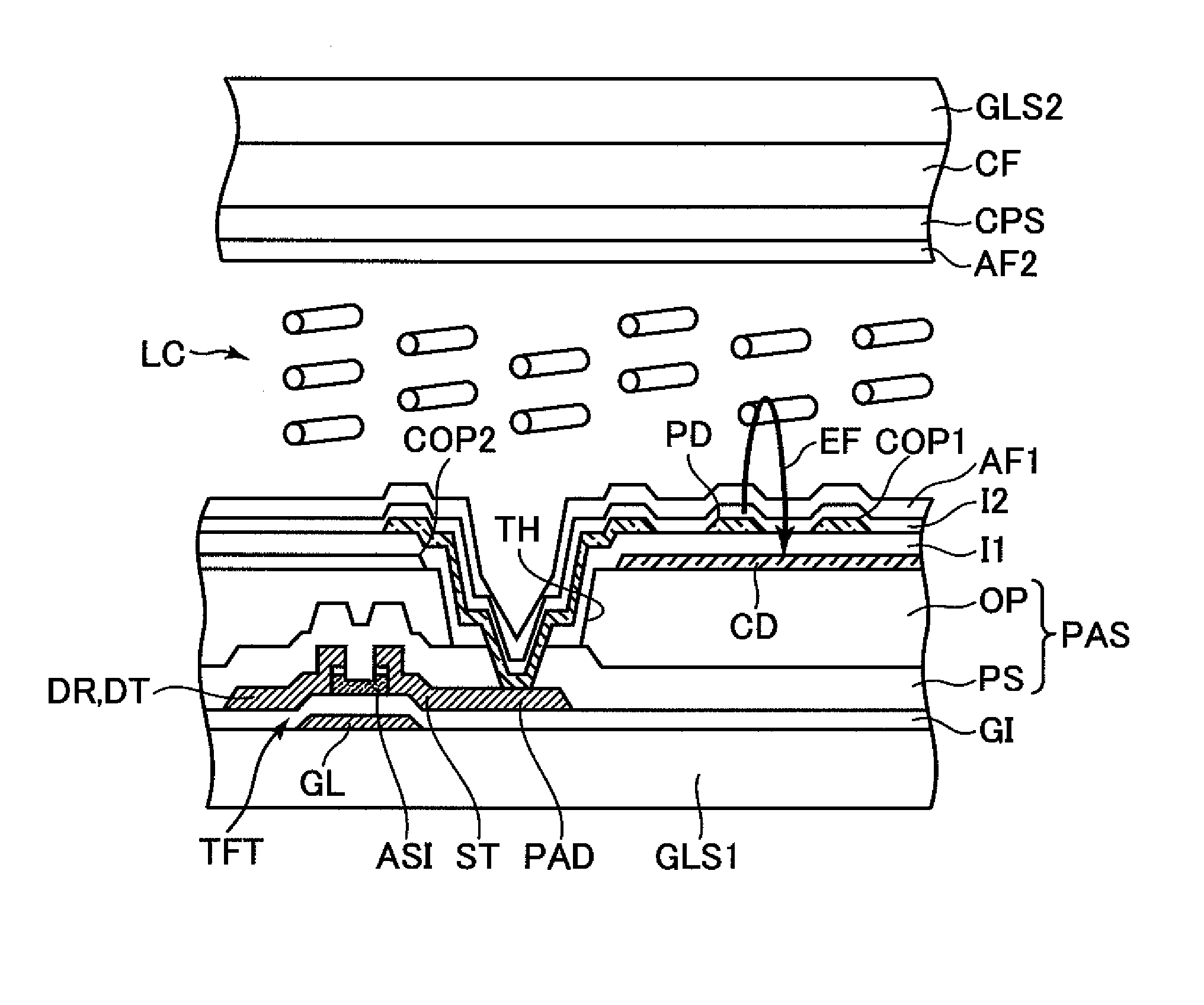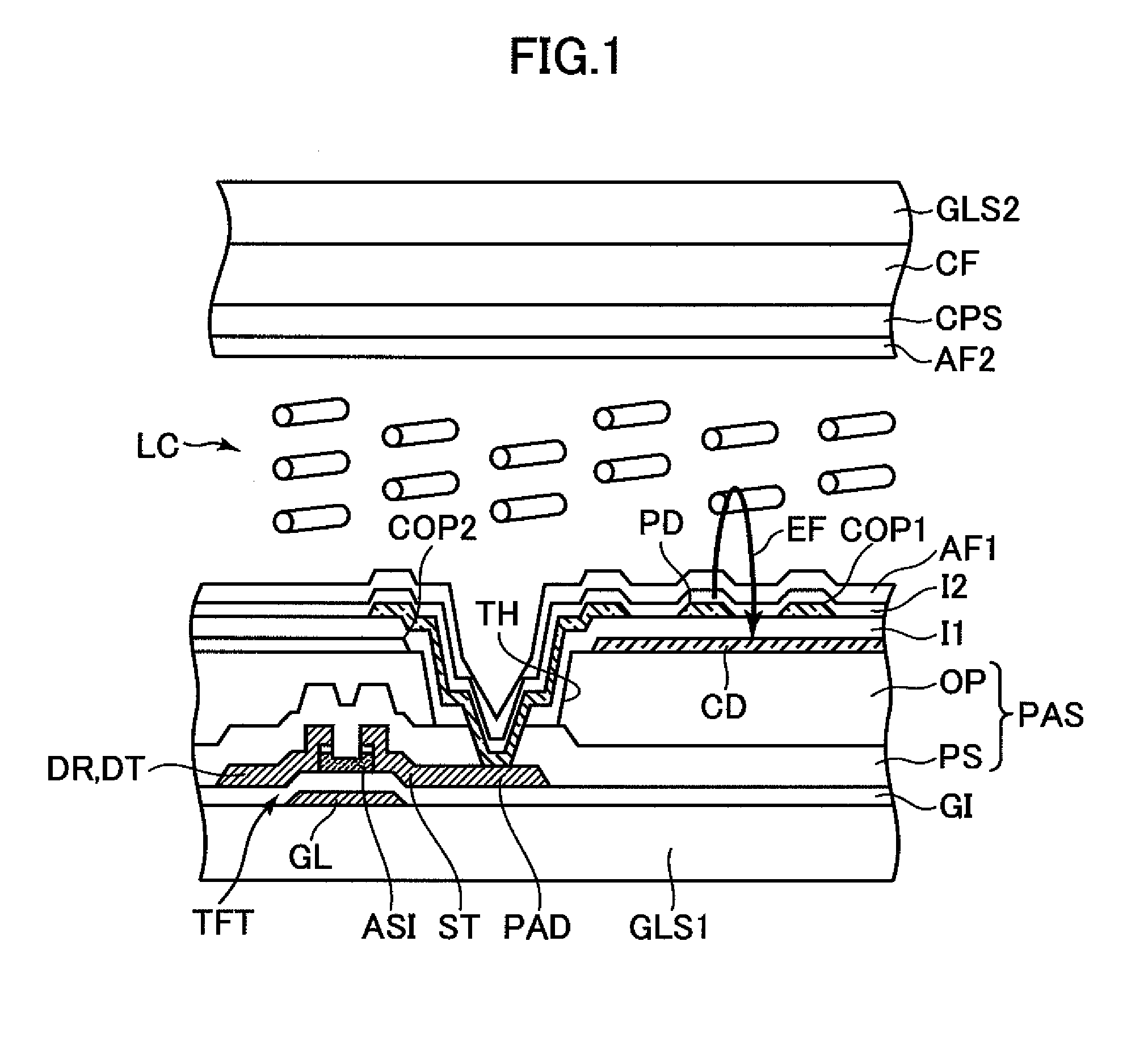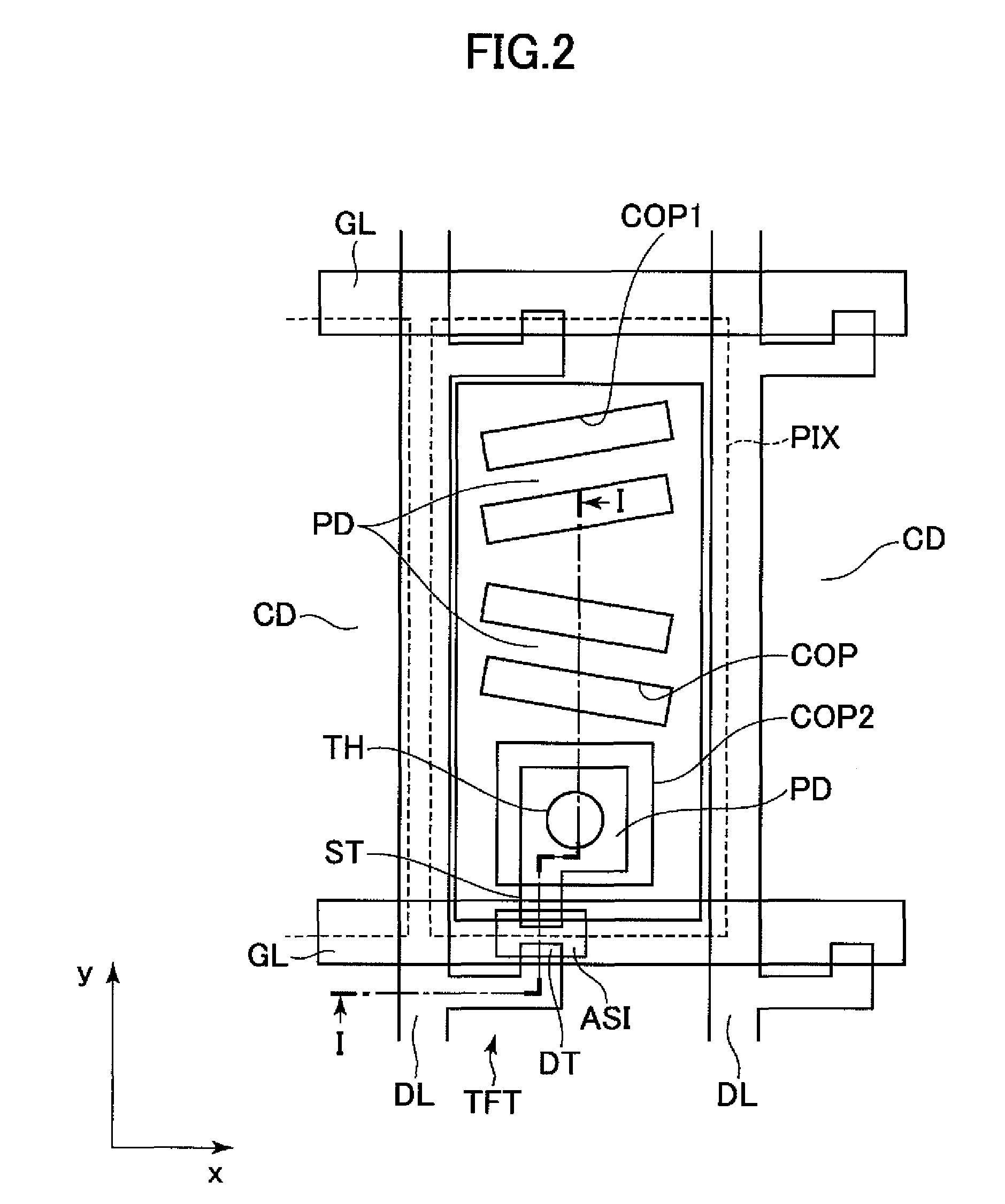Liquid crystal display device
a liquid crystal display and display device technology, applied in non-linear optics, instruments, optics, etc., can solve the problems of image sticking, image sticking as a change in brightness, image sticking becoming noticeable, etc., to prevent reliable rubbing, improve flatness of surfaces, and improve molecular orientation.
- Summary
- Abstract
- Description
- Claims
- Application Information
AI Technical Summary
Benefits of technology
Problems solved by technology
Method used
Image
Examples
first embodiment
[0038]FIG. 2 is a view illustrating a structure of a pixel, which illustrates a first embodiment of a liquid crystal display device of the present invention. FIG. 2 is a plan view as viewed from a liquid crystal side of one substrate GLS1 of a pair of substrates GLS1 and GLS2 which are provided so as to be opposed to each other with a liquid crystal LC interposed therebetween. FIG. 1 is a sectional view taken along a line I-I illustrated in FIG. 2. FIG. 1 also illustrates another substrate GLS2 which is provided so as to be opposed to the substrate GLS1 with the liquid crystal LC interposed therebetween.
[0039]First, as illustrated in FIG. 2, a pair of neighboring gate bus lines GL, each extending in an x-direction of FIG. 2, are arranged in parallel in a y-direction. A pair of neighboring data bus lines DL, each extending in the y-direction, are arranged in parallel in the x-direction. A region surrounded by the pair of gate bus lines GL and the pair of data bus lines DL corresponds...
second embodiment
[0051]FIG. 6 is a view illustrating a structure of the pixel, illustrating a second embodiment of the liquid crystal display device of the present invention. FIG. 7 is a sectional view taken along a line VII-VII illustrated in FIG. 6.
[0052]FIG. 6 is depicted for the comparison with FIG. 2. Differences between the structure illustrated in FIG. 6 and that in FIG. 2 are as follows. First, the thin film transistor TFT includes a semiconductor layer made of polycrystalline silicon PSI. Further, the thin film transistor TFT is a so-called double-gate thin film transistor having two gates. Moreover, the pixel electrodes PD have a comb-like pattern obtained by arranging a plurality of (for example, three in FIG. 6) of linear electrodes, each extending in the y-direction of FIG. 6, in parallel in the x-direction. Further, the common electrode CD is connected to the common electrode CD of the neighboring pixel in the x-direction of FIG. 6 over the data bus line DL. In this manner, the referen...
third embodiment
[0058]FIG. 8 is a view illustrating a structure of the pixel, illustrating a third embodiment of the liquid crystal display device of the present invention. FIG. 9 is a sectional view taken along a line IX-IX illustrated in FIG. 8.
[0059]FIG. 8 is depicted for the comparison with FIG. 2. Differences between the structure illustrated in FIG. 8 and the structure illustrated in FIG. 2 are as follows. First, regarding the common electrodes CD and the pixel electrode PD formed as different layers through the insulator, the pixel electrode PD is located below, whereas the common electrodes CD are located above. In this case, the pixel electrode PD is formed of a sheet-like electrode made of, for example, ITO, which is provided in the region where the pixel PIX is formed. On the other hand, the common electrodes CD are formed by forming holes COP3 through, for example, an ITO film which is formed over the entire liquid crystal display area (the ITO film is formed even in a region where the ...
PUM
| Property | Measurement | Unit |
|---|---|---|
| thickness | aaaaa | aaaaa |
| thickness | aaaaa | aaaaa |
| thickness | aaaaa | aaaaa |
Abstract
Description
Claims
Application Information
 Login to View More
Login to View More - R&D
- Intellectual Property
- Life Sciences
- Materials
- Tech Scout
- Unparalleled Data Quality
- Higher Quality Content
- 60% Fewer Hallucinations
Browse by: Latest US Patents, China's latest patents, Technical Efficacy Thesaurus, Application Domain, Technology Topic, Popular Technical Reports.
© 2025 PatSnap. All rights reserved.Legal|Privacy policy|Modern Slavery Act Transparency Statement|Sitemap|About US| Contact US: help@patsnap.com



